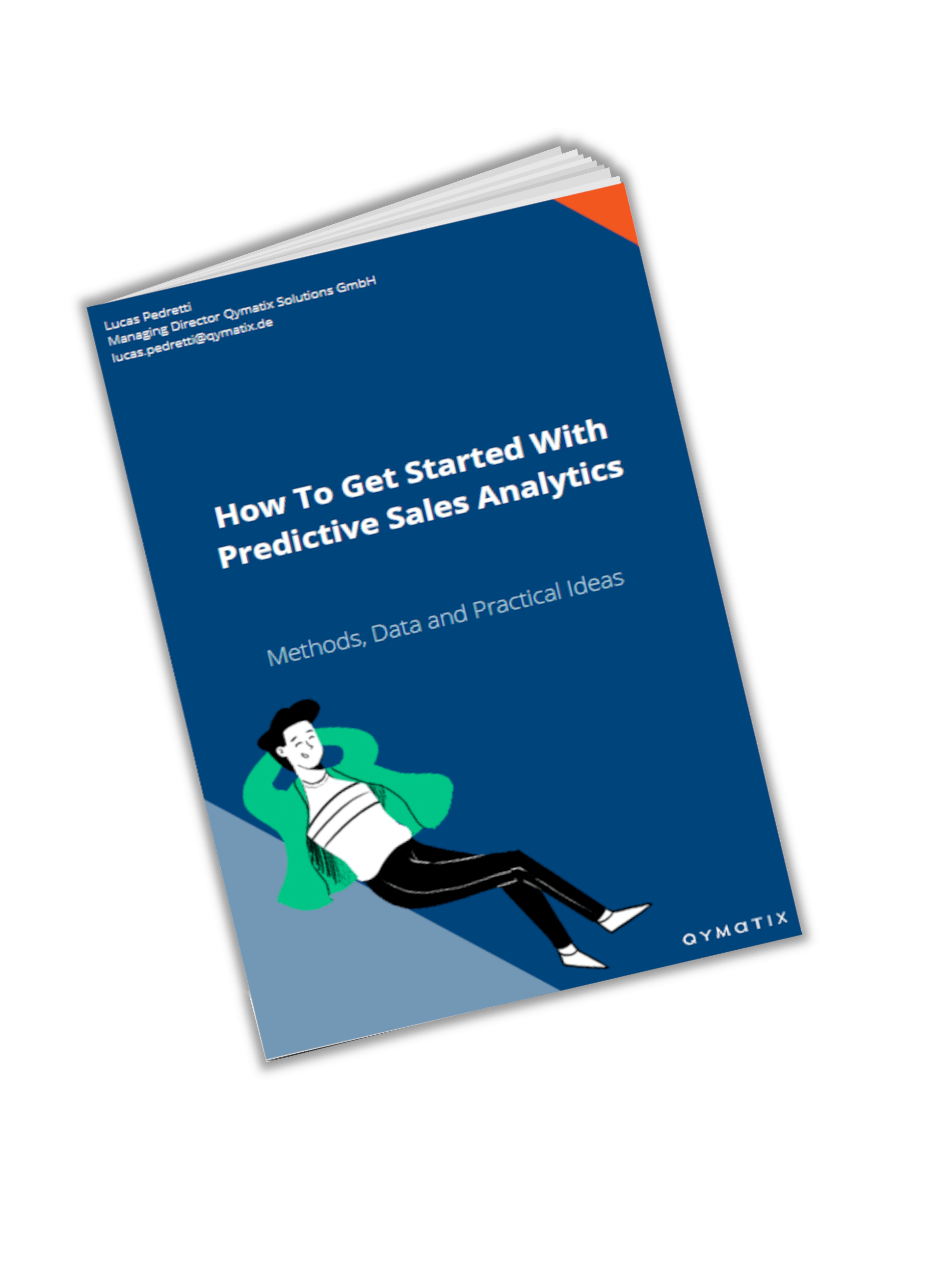How to Define and Increase the Lifetime Value of your B2B Customers

Please enter your Email address
Customer Lifetime Value Definition for B2B.
Sales and marketing B2B experts define customer lifetime value (CLV or often CLTV), lifetime value (LTV) or lifetime customer value (LCV) as the net profit attributed to the entire customer relationship. Sales practitioners usually referred to this value as predicted, yet it can also be a historical value.
For business-to-business sales managers and marketers alike, the ability to calculate what customers are worth is hugely appealing. That is the reason why customer lifetime value is prevalent in so many industries nowadays. CLV represents a quantitative metric and brings a long-term perspective to customer relationships.
Calculating predictive CLTV is delicate. Nobody knows when a customer relationship might end. Predicting customer lifetime value involves, thus the fundamental problem of forecasting uncertainty. Sales leaders can predict lifetime value, yet it will still be a prediction.
Predicting customer lifetime value involves thus the fundamental problem of forecasting uncertainty.
LTV prediction models can have varying levels of sophistication, extending from underlying empirical assumptions to the use of sophisticated predictive analytics methods and techniques.
Regardless of the definition and calculation of the LTV, one thing is clear: every manager should aim to improve it. Ironically, to describe how to increase customer lifetime value, let’s first define how to calculate it.
Customer lifetime value formula: historical vs predictive CLTV.
The first step to calculate your customer lifetime value is to set up a formula. In this step, you will notice that the discussion can get murky for several reasons. Let’s keep it simple.
There are primarily two methods to calculate CLTV: historical and predictive CLTV. The Historical CLTV is merely the sum of the gross profit from all past purchases for an individual customer. The predictive CLTV, as its name indicates, will thus be the predicted profit for the account.
Now, to the formulas. To calculate the historic CLV, add the gross profit from all past purchases of one customer. For example, list all transactions made by the account and sum revenue minus costs per each. In short:
CLTV (historical) = Sum of Gross Margin of all historical Transactions.
The calculation gets a bit more complicated for the predictive CLTV. In theory, the Customer Value Prediction should represent the net present value (NPV) of the sum of all future revenues from a customer, deducted all costs associated with that customer.
There are now two aspects to consider before describing a formula for the predictive LTV. First, the NPV. The net present value is the difference between the current monetary value of the customer profit and the present value of cash outflows over time. This key figure is a frequently used metric from business administration. It is not the focus of our article.
The second aspect to consider regarding the calculation of the predictive CLTV is the future profits. Here we need to make use of predictive analytics algorithms. These algorithms use transaction history and behavioural indicators to forecasts the lifetime value of a customer. Will the customer keep buying? Will it churn?
Assume for a moment that the customer buys the same amount as he bought in the past. Assume also that your costs remain stable.
In this case, you can calculate the predictive CLV as the net present value of the historic Customer Lifetime Value. In short, using this (highly unlikely) assumption:
CLTV (predictive) = NPV of the CLTV (Historical)
It that all? No, it is not all. Calculating the predictive LTV can get much more complicated than that. Let’s review our central assumption to illustrate how can a sales leader improve the CLTV of her customers.
Help me to define and increase the Lifetime Value of my B2B Customers today.
How B2B sales managers can increase customer lifetime value.
“Regardless of the definition and calculation of the CLTV, one thing is clear: every sales leader should work to increase it.” To explain how to increase customer lifetime value, we will review the assumptions we made in the section above.
We hypothesised that every customer will continue buying the same products purchased in the past and that your company will keep its costs constant. This circumstance is improbable.
Nevertheless, we are not discussing here the likelihood that every customer will behave in the same way they did. We want to illustrate how to improve their CLTV, irrespective of how one has defined it.
The first counter-hypothesis is that customers will keep buying. This argument is flawed. Some customer will stop buying or defect to your competitor altogether. Therefore, if a sales leader wants to improve LTV, the first action to undertake is to retain customers as long as possible.
According to the Harvard Business Review, increasing customer retention rates by 5 % increases profits by 25 % to 95 %. In simple words, companies can almost double LTV by reducing customer churn.
Not only can companies improve retention (or reduce customer churn), they should aim to sell more. There are different strategies to accelerate sales in B2B. We will resume them here by the magic word: cross-selling. Cross-selling is the practice of selling an additional service or product to an existing customer. By successfully implementing cross-selling strategies, companies can significantly uplift the CLTV of their business.
Companies can double CLTV by reducing customer churn.
Thirdly, improvements in pricing represent one of the most critical levers to boost CLTV. A mere 5 % improvement in pricing can drive the CLV up by 50 % on an average company.
Lastly, companies can reduce the cost of sales to raise their LTV. Lowering the cost of sales involves streamlining sales operations and reducing the production or purchase costs of goods sold.
How to Calculate and Increase the Lifetime Value of your B2B Customers – Summary.
Not all customers are equally valuable to a business. Determining and improving customer lifetime value (CLTV, CLV or LTV) is one of the most important duties of a B2B sales leader.
How can you calculate CLV? There is first historical CLV or predictive CLV. The last one is the prediction of the former. Managers define the lifetime value of a customer as the sum of all profit (previous or predicted) your company will realise.
Notwithstanding how you define or calculate LTV, it is of extreme imperative aspiring to increase it.
There are four strategies to improve CLTV. To secure customer retention and reduce churn is one of the most common ways to increase the lifetime of a customer and therefore, its CLTV.
Improvements in pricing can have a significant impact on CLTV. This strategy requires advanced pricing analytics.
Not only customer churn and pricing can have an impact on CLTV. To find cross-selling opportunities and to optimise sales performance by reducing the costs of sales also have a remarkable effect on CLTV.
Do you employ other strategies to improve CLTV? Leave your comment below! Do you have any further questions about customer lifetime value? Write to us today; we are happy to help!
Free eBook for download: How To Get Started With Predictive Sales Analytics – Methods, data and practical ideas
Predictive analytics is the technology that enables a look into the future. What data do you need? How do you get started with predictive analytics? What methods can you use?
Download the free eBook now.
- We will use this data only to contact you for discussing predictive sales KPIs. You can read here our declaration on data protection.

Further Read:
S. Gupta, D. Hanssens, B. Hardie, W. Kahn, V. Kumar, N. Lin, N. Ravishanker and S. Sriram (2006), “Modeling Customer Lifetime Value,” Journal of Service Research, 9, 2 (November).
Startup Killer: the Cost of Customer Acquisition
Michael Schrage. What Most Companies Miss About Customer Lifetime Value.
Adam Ramshaw. The Only 3 Strategies that Increase Customer Value

